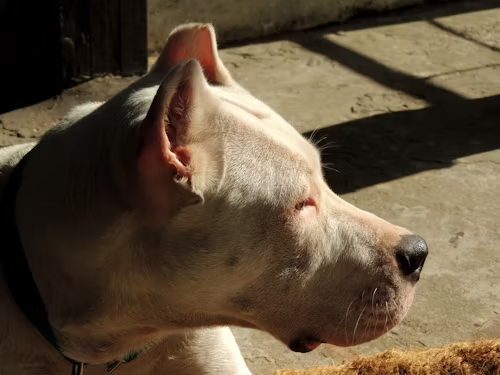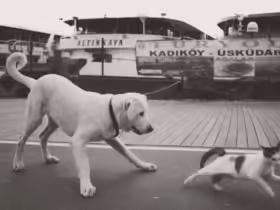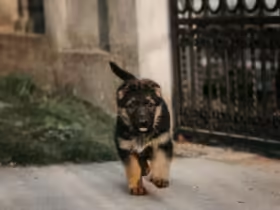The Dogo Argentino is a powerful and athletic breed originally developed in Argentina for big-game hunting and protection. Known for their strength, loyalty, and affectionate nature, Dogo Argentinos require proper training, socialization, and care to thrive as family companions and working dogs. This guide will delve into the unique characteristics, training needs, exercise requirements, and overall care of the Dogo Argentino, helping potential owners understand how to raise a happy and healthy dog.
Table of Contents
- Breed Overview
- Temperament and Personality
- Training Needs
- Exercise Requirements
- Nutrition
- Health Concerns
- Grooming Needs
- Creating a Balanced Environment
- Final Thoughts
1. Breed Overview
- Breed Group: Working Group
- Height: 24 to 30 inches
- Weight: 80 to 100 pounds
- Lifespan: 10-15 years
- Coat Type: Short, smooth coat
The Dogo Argentino was developed in the 1920s by Dr. Antonio Nores Martínez for the purpose of hunting big game, including wild boar and puma. This breed was created by crossing several breeds, including the now-extinct Cordoba Fighting Dog, to produce a loyal, strong, and courageous companion. Over the years, the Dogo Argentino has gained popularity as both a working dog and a family pet.
2. Temperament and Personality
Dogo Argentinos possess a combination of loyalty, intelligence, and a protective nature, which makes them exceptional companions but requires responsible ownership.
- Loyal and Affectionate: They are deeply loyal to their families and often form strong bonds with their owners. Dogo Argentinos are known for their affectionate nature, especially with children.
- Protective Instincts: Their protective instincts make them excellent watchdogs. They are naturally alert and will not hesitate to defend their family if they sense danger.
- Intelligent and Trainable: Dogo Argentinos are highly intelligent and eager to please, making them relatively easy to train. However, they require consistent training and socialization.
- Strong-Willed: Their independent nature can lead to stubbornness if not properly managed. Early socialization and training are essential to curtail this tendency.
Tip: Expose your Dogo Argentino to various environments, people, and other animals from an early age to help them develop a well-rounded personality.
3. Training Needs
Training is essential for Dogo Argentinos to ensure they are well-behaved and responsive to commands.
- Positive Reinforcement: Using treats, praise, and rewards is effective in training Dogo Argentinos, as they respond well to positive reinforcement.
- Obedience Training: Basic commands like sit, stay, come, and heel should be taught early on. Obedience training classes can provide a structured environment for learning.
- Socialization: Early and ongoing socialization is crucial. Exposing your dog to different people, animals, and environments will help them become well-adjusted and reduce the likelihood of aggression or fearfulness.
- Consistency: Consistent training methods and rules are necessary to ensure your Dogo Argentino understands expectations. Inconsistent training can lead to confusion and behavioral issues.
Training Tips:
- Short, Engaging Sessions: Keep training sessions short and engaging to maintain their interest and attention.
- Stay Calm and Patient: Dogo Argentinos can be sensitive to the tone of your voice; remaining calm and patient will help build trust.
- Early Training: Begin training and socialization as early as possible to instill good habits and behaviors.
4. Exercise Requirements
Dogo Argentinos are a highly active breed that requires regular exercise to maintain their physical and mental well-being.
- Daily Exercise: Aim for at least 1-2 hours of physical activity each day. This can include walks, runs, or playtime in a secure area.
- Mental Stimulation: Engage your Dogo Argentino’s mind with puzzle toys, obedience training, and interactive games to prevent boredom.
- Structured Activities: Dogo Argentinos thrive in structured environments, so consider enrolling them in obedience, agility, or protection sports to channel their energy constructively.
Tip: Always supervise outdoor activities, especially in unfenced areas, as Dogo Argentinos have strong prey drives and may chase smaller animals.
5. Nutrition
A balanced diet is essential for maintaining the health and vitality of a Dogo Argentino.
- High-Quality Dog Food: Choose a high-quality dog food formulated for large breeds, ensuring it meets their specific nutritional needs.
- Protein-Rich Diet: Dogo Argentinos require a diet rich in high-quality protein to support their muscle mass and energy levels.
- Monitor Portions: Be mindful of portion sizes to prevent obesity, which can lead to health issues. Follow feeding guidelines provided by your veterinarian or pet food manufacturer.
- Hydration: Ensure your Dogo Argentino has access to fresh, clean water at all times.
Feeding Tip: Consult your veterinarian for specific dietary recommendations based on your Dogo Argentino’s age, weight, and activity level.
6. Health Concerns
While generally healthy, Dogo Argentinos can be prone to certain health issues. Regular veterinary checkups are essential for early detection and management.
- Hip Dysplasia: A common genetic condition that affects the hip joint, leading to arthritis and mobility issues.
- Elbow Dysplasia: This condition affects the elbow joint and can cause pain and lameness.
- Skin Allergies: Dogo Argentinos may develop skin allergies, which can manifest as itching, redness, or irritation.
- Heart Conditions: Some individuals may be predisposed to certain heart conditions, so regular heart check-ups are essential.
Preventative Care: Regular vet visits, a balanced diet, and daily exercise can help manage and prevent health issues.
7. Grooming Needs
Dogo Argentinos have relatively low grooming needs due to their short, smooth coat.
- Regular Brushing: Brush your Dogo Argentino once a week to remove loose hair and reduce shedding. This also helps distribute natural oils in their coat.
- Bathing: Bathe your dog as needed, typically every few months or when they become particularly dirty. Use a gentle, dog-specific shampoo.
- Nail Trimming: Regularly trim your Dogo Argentino’s nails to prevent discomfort and mobility issues.
- Dental Care: Maintain dental hygiene through regular tooth brushing or dental treats to prevent periodontal disease.
Grooming Tip: Introduce grooming routines early to help your Dogo Argentino become accustomed to handling, making the process smoother for both of you.
8. Creating a Balanced Environment
Providing a balanced environment for a Dogo Argentino involves ensuring they have structure, socialization, and mental engagement.
- Structured Routine: Establish a daily routine for feeding, exercise, and training to help your Dogo Argentino feel secure and understand expectations.
- Socialization Opportunities: Provide opportunities for social interaction with other pets and people to help them develop good social skills.
- Secure Outdoor Space: A secure, fenced yard is ideal for Dogo Argentinos, allowing them to explore and play safely.
- Indoor Enrichment: Provide interactive toys and activities to keep your Dogo Argentino mentally stimulated, especially when indoors.
Tip: Avoid leaving a Dogo Argentino alone for extended periods, as they can become bored and potentially destructive.
9. Final Thoughts
The Dogo Argentino is a loyal, intelligent, and powerful breed that can make an excellent companion for the right owner. Their unique temperament and protective instincts require responsible ownership, including proper training, socialization, and care.
By understanding their needs and providing consistent training and socialization, you can raise a Dogo Argentino who is a loving and well-behaved member of your family. With patience, dedication, and the right approach, your Dogo Argentino can become a devoted companion who enriches your life for many years to come.











Leave a Reply